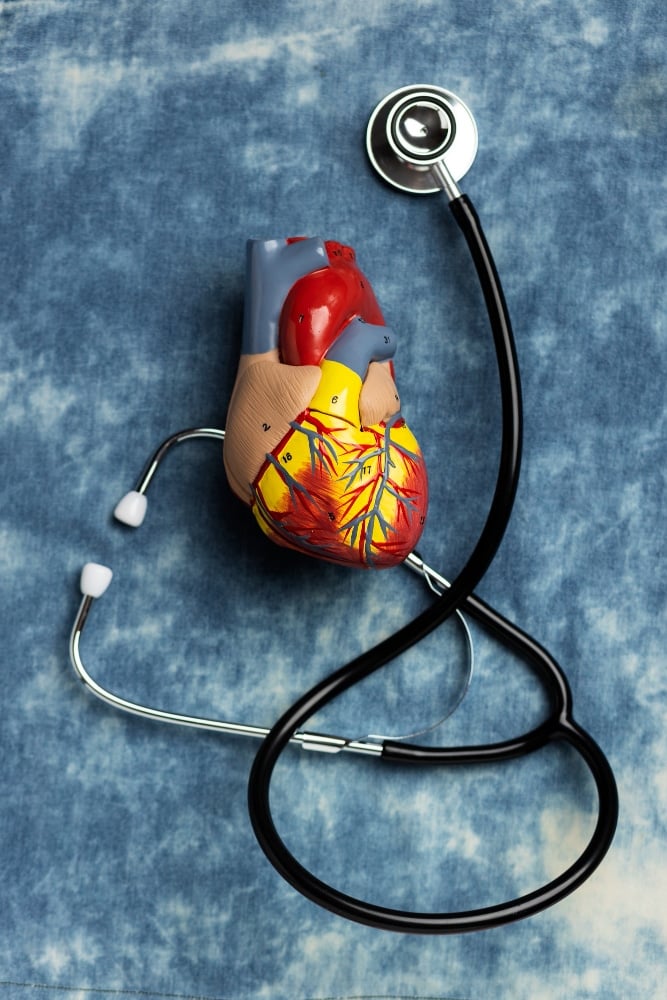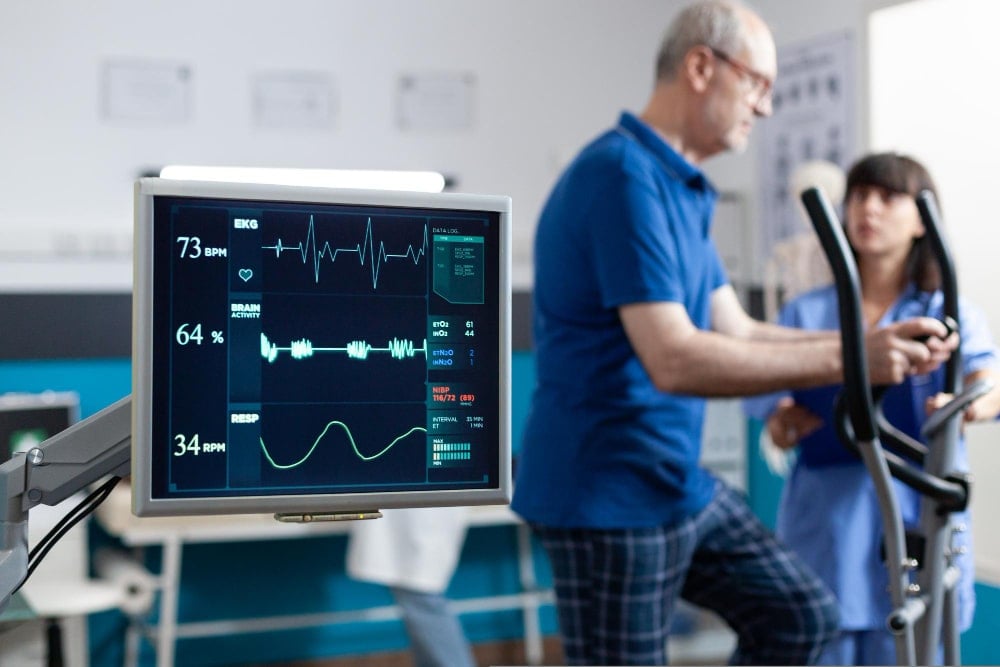Arrhythmia is a medical condition involving abnormal heart rhythms, which may lead to an irregular heartbeat. This can result in the heart beating too fast (tachycardia), too slow (bradycardia), or in an erratic pattern, disrupting the heart’s natural rhythm. Arrhythmias occur when the electrical signals that regulate heartbeats are misdirected, delayed, or fail to travel through the heart properly, impacting blood flow and overall health.
While some arrhythmias are benign, others can lead to serious conditions like heart failure, heart attack, or sudden death if not managed. Common symptoms include chest pain, palpitations, dizziness, and shortness of breath. In severe cases, arrhythmia may cause fainting, cardiac arrest, or blood clots, leading to an increased risk of stroke.
Ongoing cardiac arrhythmias may qualify as a serious health condition allowing for job protected medical leave under the FMLA.
The heart is regulated by electrical impulses generated by a natural pacemaker known as the sinoatrial (SA) node. This sinus node is located in the upper right chamber (right atrium) and sets the normal sinus rhythm, ensuring the heart beats in a coordinated manner to pump oxygen-rich blood effectively throughout the body. If the SA node malfunctions or if there are abnormalities in the electrical pathways (such as an accessory pathway or extra pathway), an arrhythmia can result.

Different arrhythmias have unique causes, characteristics, and health implications. The primary types are:
Tachycardia is a type of arrhythmia where the heart rate exceeds 100 beats per minute (bpm) at rest. This rapid heart rate may reduce the heart’s efficiency in pumping blood, causing symptoms like palpitations and chest pain. Types of tachycardia include:
Bradycardia is a slow heart rate, typically defined as fewer than 60 bpm. This can limit the amount of blood delivered to the body, leading to symptoms like fatigue, dizziness, and fainting. Some common causes include damage to the sinus node, known as sick sinus syndrome, or issues with the AV node, leading to heart block.
Premature heartbeats, or premature complexes, occur when an extra beat arises before the normal rhythm resumes. These beats may occur in the atria (premature atrial contractions) or ventricles (premature ventricular contractions). Though often harmless, frequent premature beats can increase the risk of developing more serious arrhythmias.

Atrial fibrillation is a common type of arrhythmia marked by rapid, erratic contractions of the atria. This irregular heart rhythm impairs blood flow from the atria to the ventricles, increasing the risk of blood clots and stroke. AFib requires long-term management with medications or procedures to restore normal rhythm.
Atrial flutter is similar to AFib but is more organized, resulting in a regular but rapid heart rate. This condition can also increase the risk of stroke and often requires blood thinners to reduce clot formation.
Ventricular arrhythmias originate from the ventricles and may be life-threatening:

Arrhythmia symptoms vary but often include:
These symptoms can indicate either mild discomfort or severe underlying issues that require medical attention.

Different arrhythmias have unique causes, characteristics, and health implications. The primary types are:
Arrhythmias often stem from disorders in the heart’s electrical system, including issues with the SA node, AV node, or other electrical pathways. Scar tissue from previous heart surgery, heart attack, or other injuries can also disrupt electrical signals. Other causes include structural heart disease and conditions like Wolff-Parkinson-White syndrome.
High stress and anxiety release hormones that can affect the heart’s electrical activity. External factors like physical exertion, dehydration, or even a health condition like chronic kidney disease may also trigger an arrhythmia episode.

Risk factors include:
Older adults are more susceptible due to degeneration of heart tissue.
Conditions such as coronary heart disease, heart valve disease, and ischemic heart disease.
A family history of arrhythmia or stroke may elevate the risk.
Including diabetes, chronic kidney disease, and high blood pressure.
To diagnose arrhythmia, doctors may conduct:
The ECG is a primary diagnostic tool for identifying arrhythmias. It provides real-time data on heart rhythm and electrical signals, revealing abnormalities that might indicate tachycardia, bradycardia, or atrial fibrillation.
Holter monitors are portable ECGs that record heart rhythms over extended periods (24–48 hours). Event recorders, by contrast, can be used for weeks to months and are helpful in capturing infrequent symptoms.

Common medications for arrhythmia include:
Lifestyle modifications are critical to managing arrhythmia, including:

For severe arrhythmias, surgical options may be necessary, such as:
Devices help regulate heart rhythms:
Arrhythmias can lead to significant complications, including:
Blood clots forming during AFib can cause a stroke if they travel to the brain.
Ineffective blood pumping reduces oxygenation, causing heart failure symptoms.
Life-threatening arrhythmias like ventricular fibrillation can result in immediate cardiac arrest.
Different arrhythmias have unique causes, characteristics, and health implications. The primary types are:
Preventive measures focus on lifestyle improvements:
Conditions like hypertension, high cholesterol, diabetes, and thyroid issues should be carefully managed to lower arrhythmia risk. Regular health checkups can help detect changes in heart rate, blood pressure, or blood sugar levels early.

Managing arrhythmia involves a comprehensive approach, combining lifestyle changes, medications, and possibly medical devices to restore and maintain a healthy heart rhythm. With proper care, many individuals can lead healthy, active lives despite arrhythmia. Regular follow-ups with healthcare providers, adherence to treatment plans, and consistent monitoring of heart health can help reduce the risks associated with arrhythmia, ensuring patients experience fewer symptoms and avoid complications like stroke or heart failure.
If you are experiencing ongoing symptoms of cardiac arrhythmias that are affecting your job performance, you may qualify for FMLA leave on a continuous or intermittent basis. In addition, you may be eligible for workplace accommodations through the Americans with Disabilities Act (ADA). Reach out to myFMLA for a physician consultation and assistance with FMLA certification, short term disability or ADA accommodations.

Copyright © 2025 myFMLA. All Rights Reserved. Powered by Ventnor Web Agency.